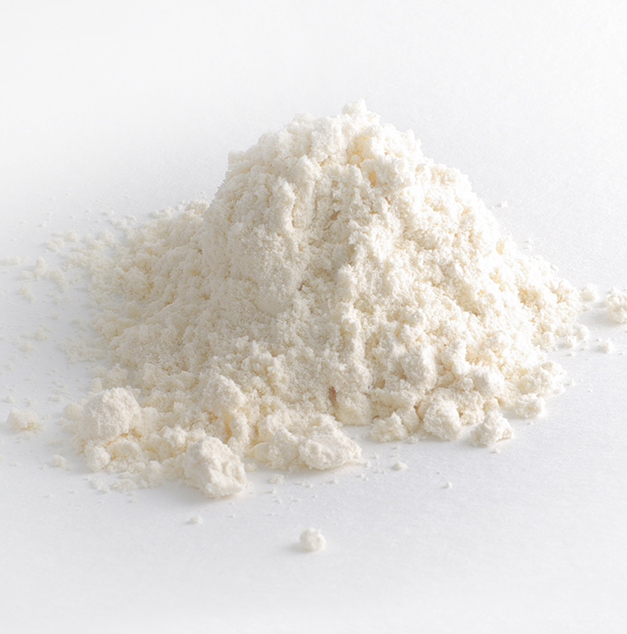Quick Summary Points
- GPLC or Glycine-Propionyl L-Carnitine is a propionyl ester of carnitine that is used by athletes or individuals involved in strength & resistance training to support testosterone, growth hormone (GH) & nitric oxide levels.
- GPLC acts as a powerful antioxidant to protect against lipid peroxidation.
- Offers a range of benefits which include improvement in insulin resistance, weight loss, enhance energy, combatting oxidative stress and more.
- Consume at least 4.5g of GPLC for acute benefits.
GPLC - What Is It?
GPLC or Glycine-Propionyl L Carnitine since 2010 has been used by athletes or individuals involved in strength & resistance training to support healthy testosterone, GH & nitric oxide levels. GPLC supplements utilise an ester (another form) of propionyl L-carnitine; a naturally occurring form of L-carnitine within our bodies. L-carnitine is involved in transporting fats into our body’s fuel system in order to provide us with energy.
 What Does GPLC Do?
What Does GPLC Do?
GPLC acts as an antioxidant and leads as a powerful free radical to protect against lipid peroxidation which can often lead to cell damage. The role of GPLC in the body is to assist energy production by facilitating the transport of long fatty chain acids into the mitochondria in order to remove waste substances in the body.
Benefits of GPLC
Unlike L-carnitine, GPLC has been reported in studies to have a number of beneficial functions within our body. GPLC may be able to:
- Combat Oxidative Stress – Through its ability to act as a powerful antioxidant within the body reducing peroxidation of lipids.
- Improve Endothelial Function – GPLC has been shown to exert a strong influence on nitric oxide levels; a molecule important for vasodilation of our blood vessels to offer potential performance enhancing ergogenic benefits.
- Offer Cardio-protective Effects – Due to GPLC’s strong affinity for cardiac muscle, it is excellent at increasing the carnitine content of cardiac muscle, more so than L-carnitine itself. Increased carnitine levels in the heart may provide a strong protective effect against metabolic and contractile issues.
- Help Insulin Resistance – Studies with GPLC have shown it may be effective in reducing weight, body fat, blood levels of insulin, as well as triglycerides in the liver – all of which are beneficial effects to combat the development of insulin resistance and diabetes.
- Enhance Energy Metabolism – GPLC also has a strong affinity for skeletal muscle and when taken as a supplement converts into L-carnitine and propionyl coenzyme A, both of which are involved in the metabolism of carbohydrates and lipids – effectively helping to increase the amount of ATP produced.
- Improve Erectile Dysfunction – A 2004 study by Cavallini et al examining GPLC on erectile dysfunction has reported it to be more beneficial than testosterone in improving certain symptoms of erectile dysfunction
Benefits of Carnitine Derivatives
L-carnitine and its two derivatives, acetyl L-carnitine (ALC) and propionyl L-carnitine (PLC) has been used extensively over the last couple of decades for a variety of conditions. Intense research has shown that ALC has the capability to enhance energy production and can also protect mitochondria (our energy production machinery) from oxidative stress. On top of that, ALC has been shown to help with several neurological disorders such as Parkinson’s, Alzheimer’s and Dementia due to its ability to cross the blood brain barrier. PLC may be even more metabolically significant and with larger therapeutic potential than ALC and L-carnitine due to the fact that it has high affinity to skeletal and cardiac muscle. That is, the uptake by our skeletal and cardiac muscles for PLC is much higher than for ALC or L-carnitine.
Studies have been able to show that not only can PLC help with a variety of conditions such as oxidative stress, cardiac and endothelial (blood vessel) function, atherosclerosis and insulin resistance; it also plays an important role in carbohydrate and fat metabolism leading to increased ATP and thus energy production. While there have been several studies showing improvements in exercise capacity for persons with cardiac issues with PLC supplementation, there have been few studies studying the ergogenic potential of PLC on healthy or trained subjects.
Why GPLC?
There is actually very little if any evidence for the addition of glycine to PLC in terms of additional advantages and effectiveness. Glycine itself is an amino acid which has a sweet taste and is commonly added to food products as a sweetener or a taste enhancer. It is also used by drug companies to increase absorption of certain drugs. GPLC is actually a patented compound from an Italian based pharmaceutical company and most if not all the ergogenic studies involving PLC are in the GPLC form, hence why supplement companies are promoting GPLC as a supplement and not PLC. Regardless of the form, PLC in the form of GPLC has been shown in several studies to have ergogenic benefits. Let’s take a look at some of these studies to see how GPLC may be able to help.
Benefits of GPLC
A range of studies have been recently released looking at the potential ergogenic effects of GPLC. Following is a quick summary of these studies:
- Bloomer et al (2007)1 was able to show that 4 weeks of GPLC supplementation at 4.5g/d on 15 healthy, resistance trained men resulted in a non significant rise in plasma nitrates and nitrites, indicating potential benefits of GPLC supplementation for increasing blood flow; a potentially ergogenic effect to increase endurance and promote faster delivery of nutrients for recovery and growth.
- Bloomer et al (2009)2 were also able to show that 8 weeks of GPLC supplementation at either 1 or 3g was able to help increase nitric oxide levels in untrained men. However, it was unable to impact on lipid levels.
- Smith et al (2008)3 however was unable to show any improvements in aerobic or anaerobic exercise performance after 8 weeks of training and supplementation of GPLC on healthy, untrained individuals.
- In contrast to many other studies, Jacobs et al (2009)4 was able to show that a single dose of GPLC at 4.5g was able to significantly improve power performance and reduce significantly lactate levels.
- Jacobs et al (2010)5 examined the effects of chronic supplementation of GPLC on 45 resistance trained men. These men were split into 3 supplementation groups in which they consumed either 1.5g, 3g or 4.5g of GPLC per day for 28 days and were tested for changes to power performance, lactate and heart rate. Interestingly enough, Jacobs et al found that 1.5g/day of GPLC supplementation resulted in the greatest improvements in power performance and a statistically significant reduction in net lactate accumulation, a surprising find compared to the previous study mentioned.
Recommended Dosage for GPLC
With only a handful of studies conducted on GPLC in particular and with some rather surprising results, it is hard to extrapolate concrete recommendations for the amount of GPLC one should take. However, the following are the best possible current recommendations:
- Consume at least 4.5g of GPLC for acute benefits.
- If taking GPLC on a long term basis, 1.5g/day is considered the most beneficial amount.
Side Effects of GPLC
While side effects of GPLC supplementation are minimal and only affect a small proportion of consumers, some potential side effects from large doses and/or long term usage include nausea and diarrhoea. Other possible, but rarer side effects include increased appetite, sleeplessness and increased body odour.
The Future of GPLC
While GPLC research is still in its early stages, there have been some promising results regarding GPLCs ability to influence nitric oxide levels. On top of that, due to PLC’s prominent role in carbohydrate and fat metabolism, PLC and supplements containing it will no doubt be a focus of many future supplement studies. Furthermore, there has been renewed interest in carnitine as a method to improve testosterone utilisation by the body6. Whether or not the two natural endogenous derivatives of carnitine; ALC and PLC also exhibit similar traits is definitely a question that needs to be addressed soon.
-
1. Bloomer RJ, Smith WA, Fisher-Wellman KH. ‘Glycine propionyl-L-carnitine increases plasma nitrate/nitrite in resistance trained men.’ J Int Soc Sports Nutr. 2007 Dec 3;4:22.
2. Bloomer RJ, Tschume LC, Smith WA. ‘Glycine propionyl-L-carnitine modulates lipid peroxidation and nitric oxide in human subjects.’ Int J Vitam Nutr Res. 2009 May;79(3):131-41.
3. Smith WA, Fry AC, Tschume LC, Bloomer RJ. ‘Effect of glycine propionyl-L-carnitine on aerobic and anaerobic exercise performance.’ Int J Sport Nutr Exerc Metab. 2008 Feb;18(1):19-36.
4. Jacobs PL, Goldstein ER, Blackburn W, Orem I, Hughes JJ. ‘Glycine propionyl-L-carnitine produces enhanced anaerobic work capacity with reduced lactate accumulation in resistance trained males.’ J Int Soc Sports Nutr. 2009 Apr 2;6:9.
5. Jacobs PL, Goldstein ER. ‘Long-term glycine propionyl-l-carnitine supplemention and paradoxical effects on repeated anaerobic sprint performance.’ J Int Soc Sports Nutr. 2010 Oct 28;7:35.
6. GPLC Patent. ‘http://www.google.com/patents/about?id=MkoRAAAAEBAJ&dq=6703042’ Last accessed 12th January 2012
7. Mingorance C, Rodriguez-Rodriguez R, Justo ML, Herrera MD, de Sotomayor MA. ‘Pharmacological effects and clinical applications of propionyl-L-carnitine.’ Nutr Rev. 2011 May;69(5):279-90. doi: 10.1111/j.1753-4887.2011.00387.x.
